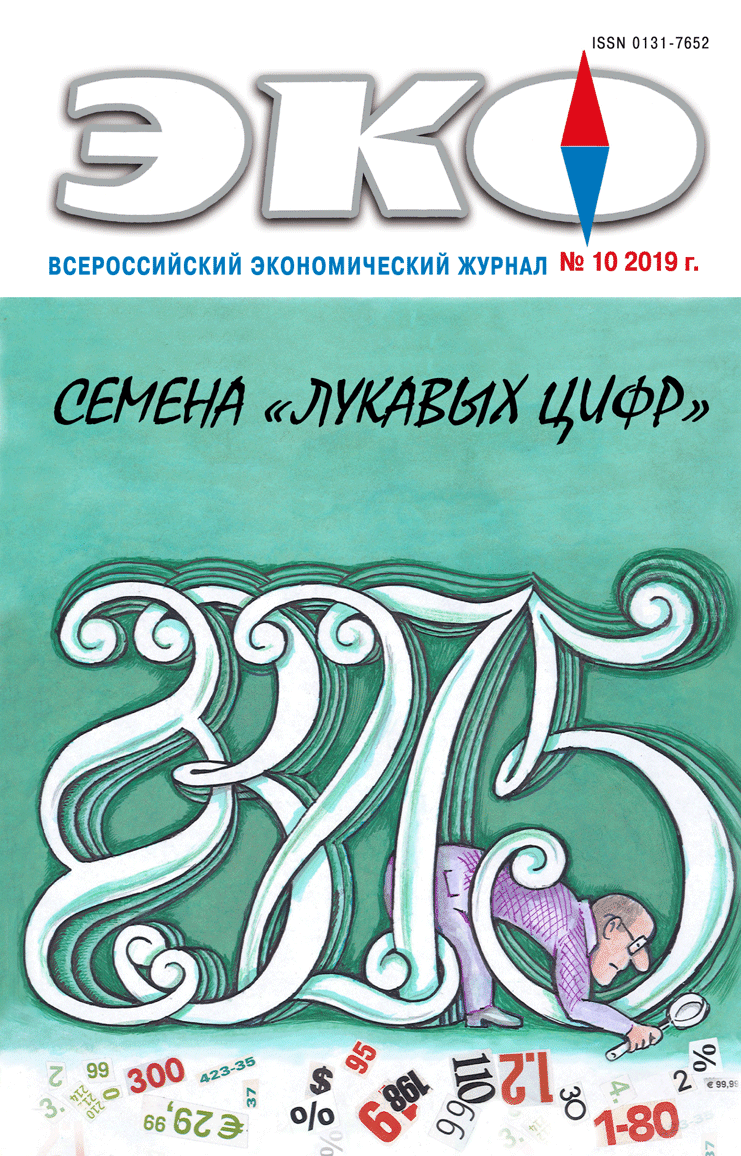FINANCIAL ECONOMY
Published 2019-10-03
Keywords
- digital currency,
- central banks,
- central bank digital currency (CBDC),
- electronic money,
- cryptocurrencies
- blockchain,
- distributed ledger ...More
How to Cite
1.
Kochergin Д, Yangirova А. Digital Currency as a New Form of Central Banks Money. ECO [Internet]. 2019 Oct. 3 [cited 2026 Jan. 17];49(10):148-71. Available from: https://ecotrends.ru/index.php/eco/article/view/3900
Abstract
The release of digital currencies by central banks for retail or wholesale payments is one of the most promising directions of blockchain technology in operations of central banks. Among key characteristics of such currencies are ways of integration into a monetary system, the technology of issue, the way of storage, the mechanism of implementation of mutual settlements, the anonymity degree, and the possibility of access to funds. Digital currencies of central banks can become a new form of central bank money with such advantages as: granting alternative and universally available lawful means of payment and ensuring faster, transparent and cheap intra country and cross-border calculations. The article assesses prospects of digital currencies release by central bank in different countries. The review includes interpretation of central bank digital currencies with their classification, analysis of main approaches to central banks digital currencies issue and their key characteristics. The available results can be used by those engaged in economic research, credit institutes and central banks for improvement of national monetary circulation systems.References
- Ингвес С. Переход на безналичные деньги // Трансформация денег: судьба денежных единиц в цифровом мире. Финансы&Развитие. 2018. № 2. С. 11–12.
- Ingves, S. (2018). Going Cashless. Finansy&Razvitie. Finance and Development. No. 2. Pp. 11–12. (In Russ.).
- Киселев А. Есть ли будущее у цифровых валют центральных банков. Аналитическая записка // Банк России. 2019. 23 c. [Эл. ресурс]. URL: https://www.cbr.ru/Content/Document/File/71328/analytic_note_190418_dip.pdf (дата обращения: 25.05.2019).
- Kiselev, A. (2019). Does the digital currency of central banks have a future? Analytical note. Bank of Russia. 23 p. URL: https://www.cbr.ru/Content/Document/File/71328/analytic_note_190418_dip.pdf (accessed 25.05.2019). (In Russ.).
- Кочергин Д. А. Место и роль виртуальных валют в современной платежной системе // Вестник Санкт-Петербургского университета. Экономика. 2017a. Т. 33. № 1. С. 119–140.
- Kochergin, D.A. (2017a). The roles of virtual currencies in the modern payment system. Vestnik Sankt-Peterburgskogo universiteta. Ekonomika. St Petersburg University Journal of Economic Studies, SUJES. Vol. 33. No. 1. Pp. 119–140. (In Russ.).
- Кочергин Д. А. Системы электронных денег в финансовых центрах Азии // Мировая экономика и международные отношения, 2017b. Т. 61. № 7. C. 54–63.
- Kochergin, D.A. (2017b). Development and regulation of electronic money systems in Asian financial centers. Mirovaya ekonomika i mezhdunarodnye otnosheniya. Vol. 61. No. 7. Pp. 54–63. (In Russ.).
- Кочергин Д. А. Электронные деньги. М.: Центр исследований платежных систем и расчетов, 2011. 424 c.
- Kochergin, D.A. (2011). The electronic money. Moscow, Biblioteka Tsentra issledovanii platezhnykh sistem i raschetov Publ. 424 p. (In Russ.).
- Мау В. А. Национальные цели и модель экономического роста: новое в социально-экономической политике России в 2018–2019 гг. // Вопросы экономики. 2019. № 3. C. 5–28.
- Mau, V.A. (2019). National goals and model of economic growth: New in the Russian socio-economic policy of 2018–2019. Voprosy ekonomiki. No. 3. Pp. 5–28. (In Russ.).
- Сапожков О., Крючкова Е. Цифровые активы двинулись вспять // Коммерсантъ. 2018. 30 ноября. [Эл. ресурс] URL: https://www.kommersant.ru/doc/3814473 (дата обращения: 19.03.2019).
- Sapozhkov, O., Kryuchkova, E. (2018). Digital currencies moved back. Kommersant. Available at: https://www.kommersant.ru/doc/3814473 (accessed 19.03.2019). (In Russ.).
- Arvidsson, N. (2017). The cashless society: Industrial dynamics influencing cash-based payment services. Enterprise Applications, Markets and Services in the Finance Industry. Vol. 276. Pp. 105–113.
- Ali, R., Barrdear, J., Clews, R. and Southgate, J. (2014). The Economics of Digital Currencies. Bank of England Quarterly Bulletin. Vol. 54. No. 3. Pp. 276–286.
- Barontini, С., Holden, H. (2019). Proceeding with caution – a survey on central bank digital currency. BIS Papers. No. 101. 24 p.
- Bech, M., Garratt, R. (2017). Central bank cryptocurrencies. BIS Quarterly Review. Рр. 55-70.
- Garrat, R. (2016). CAD-coin versus Fedcoin. R3 Reports. 9 p.
- Camera, G. (2017). A perspective on electronic alternatives to traditional currencies. Sveriges Riksbank Economic Review. Рр. 126-148.
- Coeuré, B., Loh, J. (2018). Central Bank Digital Currencies. Committee on Payments and Market Infrastructures BIS Report. 34 p.
- Kaminska, I. (2017). What is ‘Utility Settlement Coin’ really? The Financial Times. Available at: https://ftalphaville.ft.com/2017/09/18/2193542/what-is-utility-settlement-coin-really/# (accessed 25.03.2019).
- Khiaonarong, T., Humphrey, D. (2019). Cash Use Across Countries and the Demand for Central Bank Digital Currency. IMF Working Papers. No. 46. 43 p.
- Mohanty, S., Sin, Ng Nam. (2017). The future is here Project Ubin: SGD on Distributed Ledger. Monetary Authority of Singapore. 44 p.
- Juks, R. (2018). When a Central Bank Digital Currency Meets Private Money: The Effects of an E-Krona on Banks. Sveriges Riksbank Economic Review. No. 3. Pp. 79–99.
- Engert, W., Fung, B. (2017). Central Bank Digital Currency: Motivations and Implications. Bank of Canada Staff Discussion Paper. 30 p.

